Talk about striking gold! Britain’s oldest coin hoard is discovered in Buckinghamshire dating back 2,173 years – and experts say it could be worth £30,000
>
- Stephen Eldridge found twelve Iron Age pieces during a search in Buckinghamshire
- They were created in 150 BC and come from a tribe in what is now Picardy in France
A metal detectorist has discovered Britain’s oldest hoard of gold coins, dating back 2,173 years.
Stephen Eldridge found the twelve Iron Age pieces during his search for farmland in Buckinghamshire.
Experts at the British Museum identified them as coming from a tribe in what is now Picardy, France, and made in 150 BC.
It is thought that the coins were probably exported to Britain in exchange for Celtic mercenaries going to Gaul in Western Europe to fight the Romans.
Although individual gold coins from this period have been found before, a treasure from this date is incredibly rare.
A metal detectorist has discovered Britain’s oldest hoard of gold coins, dating back 2,173 years
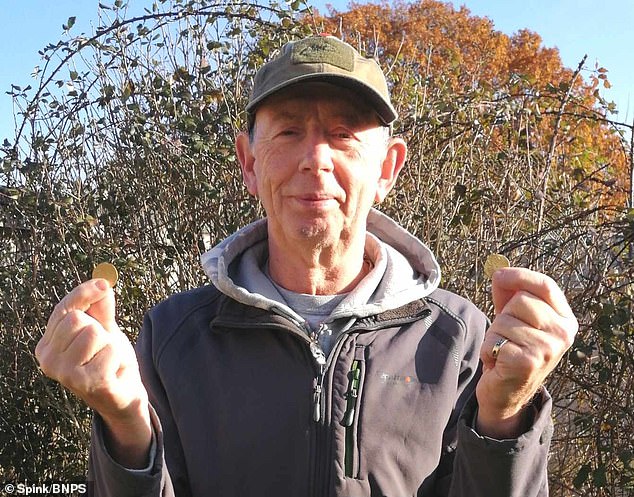
Stephen Eldridge found the twelve Iron Age pieces during his search for farmland in Buckinghamshire
The coins are now expected to sell for £30,000 when they go under the hammer at London auctioneer Spink & Son.
Mr Eldridge, 68, found the coins in November 2019 in the village of Ashley Green, Buckinghamshire.
In 150 BC the area was inhabited by the Catuvellauni tribe, who in the following century became the most powerful tribe in Britain.
Having gone through the hoarding process, Mr Eldridge has now put the coins up for auction with London-based coin specialists Spink.
Scientific X-ray fluorescence analysis confirmed that the coins were approximately 75 percent gold with an alloy of silver and copper, indicative of the economy in which Britain’s first gold coins circulated.
Gregory Edmund of Spink & Son said: ‘Although individual gold coins from this period have been recorded throughout South East England, it is incredibly rare for a hoard of this size or date to be discovered.
‘Contemporary local coins were simply cast issues of base metal called ‘potins’. Whoever successfully imported this hoard of gold coins would undoubtedly have exerted influence in the region.
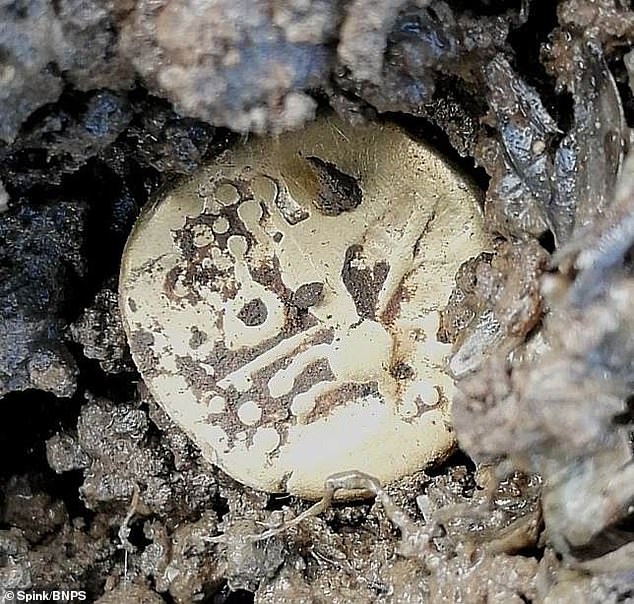
Experts at the British Museum identified them as coming from a tribe in what is now Picardy, France and made in 150 BC.
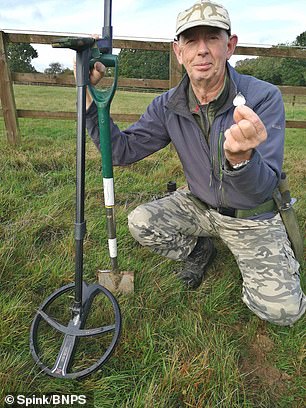

The coins are now expected to sell for £30,000 when they go under the hammer at London auctioneer Spink & Son.
‘They would have been exported, probably in exchange for mercenaries, equipment and hunting dogs to fight against the Romans or other tribes in Belgium.
‘Twenty or thirty years after they were deposited, we started getting the first British coins in the same style.
‘These coins were in the richest part of the English kingdom.
‘A treasure of this size and period is unprecedented in the archaeological archive.
‘One other treasure from this period of three coins has been found.
‘These coins have been well used, it is very clear that they are not fresh when put in the ground, but still contain remarkable detail of a rarely seen Iron Age art form.
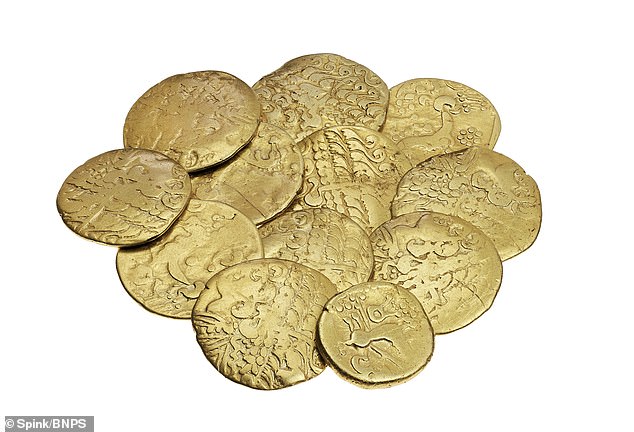
Having gone through the hoarding process, Mr Eldridge has now put the coins up for auction with London-based coin specialist Spink
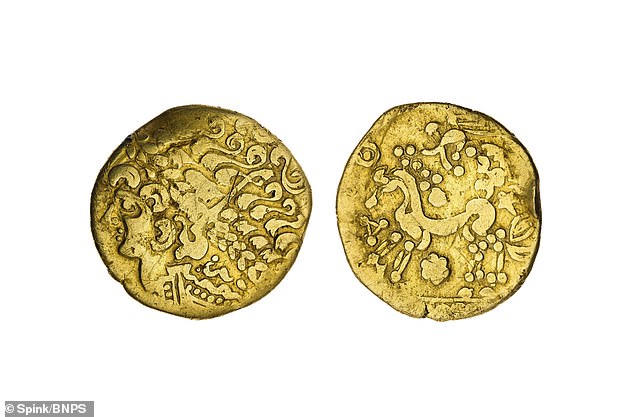
Scientific X-ray fluorescence analysis confirmed that the coins were approximately 75 percent gold with an alloy of silver and copper, indicative of the economy in which Britain’s first gold coins circulated.
‘It is often speculated that this coin’s portraits were deliberately androgynous, despite being modeled on the classical male god Apollo.
‘The feminine style is likely a reflection of the political significance of women in Iron Age society, allowing historical figures such as Cartimandua and Boudicca to rise to prominence and our now national folklore.
“It is incredibly satisfying to assist in the proper recording, academic analysis and now sale of these prestigious prehistoric relics.”
The British Museum decided to reject the coins after the inquest, meaning they go back to the finder.
Mr Eldridge will share the proceeds with the landowner.
The coins will be sold at Spink on Thursday.
